

Meadowsweet is a nice spring-blooming or summer-flowering shrub.
Main Meadowsweet plant facts
Name – Spiraea sp, Spirea
Family – Rosaceae
Type – shrub
Height – 6 ½ feet (2 meters)
Exposure – full sun
Soil – ordinary, well drained
Foliage: deciduous – Flowering: spring or summer depending on the variety
Planting, pruning and caring for it are steps that will help enhance blooming and growth of your meadowsweet.
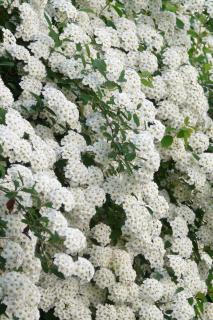 Meadowsweet is planted rather in fall or in spring for specimens purchased in containers.
Meadowsweet is planted rather in fall or in spring for specimens purchased in containers.
In order to sustain the blooming of your meadowsweet, choose a sunlit or partly shaded area.
For meadowsweet planted in spring, ready yourself to water at regular intervals during the 1st year after planting.
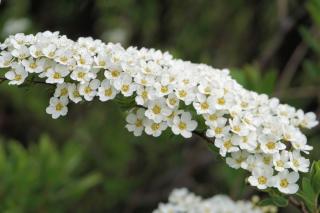
Propagate through cuttings at the end of winter. Cuttings is indeed the easiest and surest technique to propagate meadowsweet.
If properly settled in, meadowsweet requires very little care and maintenance.
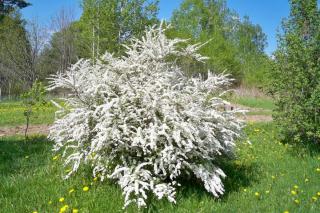 Remove wilted flowers regularly to extend the blooming period as much as possible.
Remove wilted flowers regularly to extend the blooming period as much as possible.
It is possible to not prune meadowsweet, as for all shrubs.
But if you prune your meadowsweet right after the blooming, you’ll increase the following year’s blooming both in quality and quantity.
Spring-flowering species are pruned just after flowers have fallen off.
Summer-flowering species are pruned at the end of winter, towards the month of March. This includes Spirea japonica.
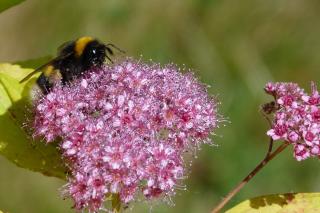 Meadowsweet is a beautiful shrub, generally blooming in spring although some varieties may bloom in summer. Great choice to support pollinators in your area.
Meadowsweet is a beautiful shrub, generally blooming in spring although some varieties may bloom in summer. Great choice to support pollinators in your area.
It is very easy to care for and quite hardy. It adapts well to most soil and climate types.
Its hardiness to freezing stands down to 5°F (-15°C).
Certain meadowsweet cultivars are dwarf cultivars and are particularly well-suited to growing in pots.
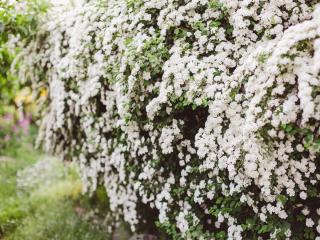 You can set meadowsweet up either as a hedge, a standalone or in shrub beds.
You can set meadowsweet up either as a hedge, a standalone or in shrub beds.
Among the many interesting species and varieties of meadowsweet, take note of:
Read also on the topic of shrubs:
The center of the shrub must be pruned often in order to ensure that as much light reaches down inside as it can.